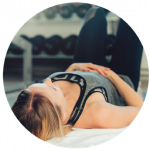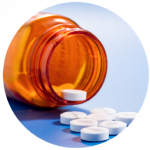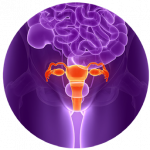Overactive Bladder (OAB)
Could I Have an Overactive Bladder?
If you’ve found that your bladder is controlling you more than you’re controlling it, you could have a medical condition called Overactive Bladder, or OAB. And despite what you may have heard, it’s not an inevitable part of the aging process, and it’s not something you should ‘just have to live with.’
Fortunately, there are real, effective treatments available. The first step on your path to better wellness begins with understanding the signs and symptoms.

Signs & Symptoms of Overactive Bladder
- Urinating more than 8 times per day
- The urgent need to urinate
- Accidental leaking
- Waking up twice or more at night to go
- Staying close to bathrooms
- Avoiding fluids before bed
- Monitoring fluid intake
- Using pads and similar products
Treatments for Overactive Bladder




There are lots of reasons why people don’t seek treatment for OAB. Many people don’t think that anything can be done about it. Some assume that it’s actually normal as they get older. And others are simply too embarrassed to talk about it. In fact, less than half of adults living with OAB seek help for their condition1.
That’s unfortunate because there’s a whole range of proven, effective treatments available, including some that you can do on your own, right now. Some of these options include…
- Changes in Diet – Acidic foods, spicy foods, sugar, caffeine, and alcohol can all aggravate OAB symptoms. Some cause bladder irritation, others can increase your need to urinate, but they should all be monitored and limited.
- Pelvic Floor Exercises – Women who exercise the muscles in the pelvic floor can strengthen them enough to measurably improve their ability to control their bladders. It’s easy to do, discreet and effective.
- Bladder Retraining – Scheduling bathroom visits, delaying urination, and keeping a bladder diary can all help you manage and improve how frequently and urgently you need to urinate.
- Medication – There’s a wide range of medications, including over-the-counter and prescription oral medications as well as injectables that can help improve bladder function for many patients.
- Neuromodulation – A therapy that uses gentle nerve stimulation thought to normalize bladder-brain communication.
- Axonics® Therapy – provides gentle stimulation to the nerves that control the bladder and bowel, which can restore normal control and result in symptom improvement. Read more about Axonics® Therapy
- InterStim – One of the most exciting therapies our office offers for the treatment of OAB is the InterStim™ system by Medtronic, one of the world’s leading healthcare innovators. Read more about InterStim.

Talking With Your Doctor
For many patients, the hardest part of their treatment plan is getting started. It isn’t always easy to talk about incontinence, even with your physician, but it’s a necessary first step if you want to see results.
There’s no need to be embarrassed. Our medical staff works with OAB patients every single day, and we’re experts at making sure you’re comfortable having an open, honest conversation about the symptoms you’ve been experiencing.
Give us a call today at (505) 888-0443 and we’ll help you develop a treatment program
that’s right for you.
